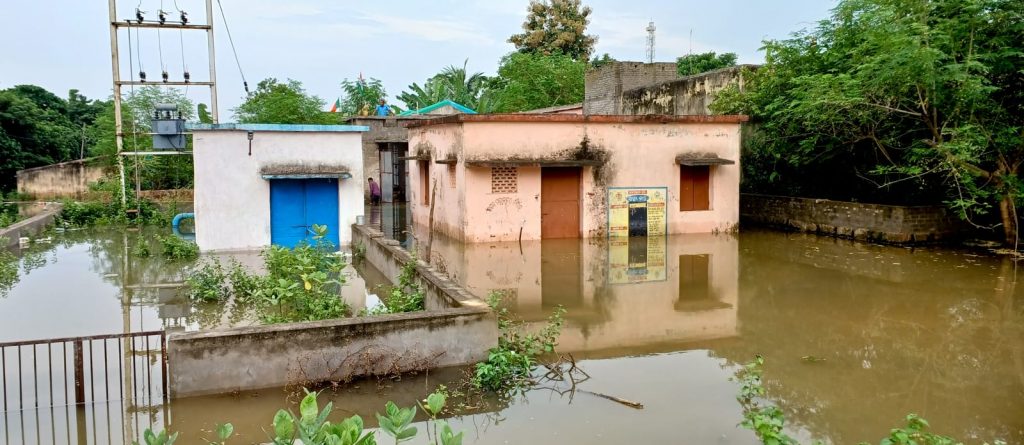Balasore: Unable to get potable water in marooned villages in parts of Odisha, a number of people are forced to drink what is available – the muddy and contaminated water that has accumulated in villages in the past few days due to flood.
Though water in flooded rivers has receded significantly and is flowing below the danger mark, many villages still remained marooned.
Many mud houses have been collapsed or damaged, food has become scarce, and there is no place to attend to nature’s call. Diarrhoea cases are also being reported from the 14 districts affected by the deluge as people are drinking contaminated water.
“We are managing with dry food like flattened rice, but unable to get a drop of water to drink. Tube wells and other sources of drinking water are submerged in the flood. We are forced to drink the flood water,” Makara Dalei of Nayabali village under Baliapal block of Balasore district.
He said villagers are not even able to boil the flood water and make them drinkable due to lack of fuel.
“Those who had cooking gas connection are also affected as cylinders have been swept away along with other household articles after flood water entered homes,” he said.
There is no power in the area due to the flood and water cannot be supplied under the Rural Water Supply and Sanitation scheme.
Minati Sethy, a septuagenarian woman, said she is not able to cook because of lack of dry firewood.
Elderly people of her Uluda village under Bishnupur gram Panchayat, who could not be evacuated, are virtually starving, she said.
Sethy said she has been surviving with watered rice which was cooked three days ago before the flood water of the Subarnarekha river inundated their village.
Her 10-year-old granddaughter Geeta, who was shifted to a high land on the river’s embankment, does not realise the plight of the villagers. The girl was heard reciting an Odia poem from her textbook when a PTI reporter visited the river bank in Baliapal block.
“The administration has not provided safety to the people. It is foolish to expect drinking water from them,” said the dejected elderly woman.
The Balasore district administration, however, said it is providing food to over 7,000 evacuated people who are lodged in 40 shelter homes.
Of the 136 marooned villages in Balasore district on Wednesday, 115 are in Baliapal block.
The situation is more or less similar in other affected blocks like Bhograi, Basta and Jaleswar, said Harish Behra, a local school teacher.
There is scarcity of drinking water, polythene sheets and healthcare services for the elderly and pregnant women, he said.
Women in groups are going on boats in search of a place where they can attend to nature’s call.
“Now only the blessings of Indra Dev (Rain God) can save us,” said Mamata Patra, sitting in a makeshift tent on an embankment in Bhogarai area.
Director of Public Health Service, Dr Niranjan Mishra, said in Bhubaneswar that as many as 900 cases of diarrhoea have been reported from 14 flood-affected districts.
The disease spreads due to consumption of contaminated water, he said.
The Water Resources Department said that the flood situation has improved in the Mahanadi and Subarnarekha river system.
The peak flood water has already passed, but it may take time for the water to recede from villages in low laying areas, the department’s chief engineer B K Mishra said.
Residents of Ganjam district have sent three truck loads of essential materials such as water bottles, dry food packets, medicine kits and other items for the flood-affected people of Balasore district.
PTI
